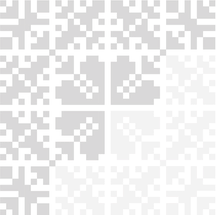C8 M1 L1 Homework
8 | Modul 1: Domaća zadaća
Kvaliteta života
8 | 1 | Lekcija 1: Idemo na kavu
DZ | 8.1 Zadatak 1. Što za tebe znači kava? |
Write about the importance of coffee in the US culture.
1 | Koliko često piješ kavu/čaj? |
- | |
2 | Koji su tvoji rituali uz kavu/čaj? Što radiš? |
- | |
3 | Gdje obično kupuješ/naručuješ kavu ili čaj? |
- | |
4 | Koju kavu/čaj piješ? |
- | |
5 | Kada obično piješ kavu? |
- |
DZ | 8.1 Zadatak 2. Vrijednosti - razgovor |
Cultural discussion. In class, we already watched some Croatian coffee advertisements. Now it’s your turn to find some - one related to the US market and one related to the Croatian market.
| Task |
Copy the link for each of your chosen commercials. |
What differences do you see between the two? |
What values do each of them promote? Compare the two countries. |
Read the posts from your classmates and provide your comment to each post.
DZ | 8.1 Zadatak 3. Što za tebe znači kava? |
Look at the following two pictures and answer the questions below.
1 | Što vidiš na slikama? |
- | |
2 | Ima li razlike? (razlika = difference) |
- | |
3 | Zašto u SAD-u ima više opcija? |
- | |
4 | Je li kava u SAD-u skuplja ili jeftinija nego u hrvatskoj? |
- |
DZ | 8.1 Zadatak 4. Kultura - razgovor |
Cultural discussion. Let’s investigate and interpret further the coffee culture in Croatia. Explore what others have said about coffee culture in Croatia. Together with the online articles provided below, do your own research. This is your opportunity to state what you may still wonder about, what questions you might still have about Croatian coffee culture, and what more you would like to learn about the topic.
| In English
Read both articles and answer the questions below. When you are done, search more online for any other component related to this topic that you are still interested in.
Članak 1: Idemo na kavu by Cody McClain Brown
After reading the article #1, answer the following questions.
| Pitanja |
What is the author’s opinion about Croatia and the US? Do you agree? |
What did you learn about coffee sizes in Croatia? Why is Croatia different than the US in these terms? |
What did you learn about the connection between coffee and the social life of Croatian citizens in this article? |
Članak 2: Kad razlog za odlazak na kavu nije kava by Lada Prkić
After reading article #2, answer the following questions.
| Questions |
What does the author say about ispijanje kave? Discuss the main components that you find the most relevant. Why? |
What countries do the authors make comparisons to? How do they all differ? |
What is the role of Riva in this story? Is there a place like this in your city? |
What do you think of LVXOR ambient? (Browse more online.) |
Which places in the article do you find most interesting? Why? |
What did you learn about the connection between coffee and the social life of Croatian citizens in this article? |
| Tvoje mišljenje
1. What is the difference between Croatia and the US? What values are promoted by each country in terms of coffee culture?
2. Include any additional link that you found in your additional research and provide your opinion/conclusion/observations. Also, write any possible questions that you want answers for. Why did you ask those questions?
3. Read all other posts and participate in the online discussion.
Your instructor will reflect on your questions, and your peers will give their opinions.
DZ | 8.1 Zadatak 5. Na kavi - dijalog |
🔊
Look at/listen to dialogue 3 from today’s lesson again. Answer the questions below in English.
1 | What do you have to say about each character based on the dialogue? What do you think of them? |
- | |
2 | Do you agree with James and how he behaved in this situation? |
- | |
3 | What would you do? |
- | |
4 | If you were James, what would you say after the waitress told you: “Ajde, cappuccino ili nescafe. Isto je to. [...] Vidiš koliko ima ljudi.” |
- | |
5 | Do you believe that something like this could happen in the US service industry? |
- | |
6 | How would an American react to this situation in the US? Are there any differences between the countries? |
- | |
7 | What attitude does Matija have towards the waitress? |
- | |
8 | Do you believe that this was a conflict situation? |
- |
Look at/listen to all the dialogues from today’s lesson again (practice the vocabulary). Use dialogue 2 or dialogue 3 and the situation that appeared in them to create a new dialogue with one of your classmates. One of you is the guest and the other one is the coffee shop employee. Submit your video recording online.
When done with your dialogue, answer the questions.
1 | Što je gost naručio? |
- | |
2 | Koliko košta narudžba? |
- | |
3 | Je li konobar bio pristojan? Zašto? |
- | |
4 | Što je rekao gost kada je primio krivu narudžbu? |
- |
primiti krivu narudžbu = to receive a wrong order
DZ | 8.1 Zadatak 6. Proizvodi |
We already talked about these products in class today. Now, let’s investigate them further and understand their perception and/or importance in Croatian society.
Let’s watch the following commercials for each of the products: | ||
| In English
Watch each commercial carefully and provide your comments/answers.
1 | What do you think, what does each commercial promote? What is your interpretation? |
- | |
2 | Are there any similarities in social values in commercials between Croatia and the U.S.? |
- |
| Story about PIPI
Pipi is a drink very similar to Fanta (but with its distinct taste/flavor). It is a local brand from the Croatian region of Dalmatia. This drink is usually associated with summer, friends, hanging out, cool refreshments, good times, etc.
The PIPI commercial from the 1980s became an iconic commercial that almost everyone knows, and the music from that commercial is also very well known. The commercial was filmed in Split, on the beach Bačvice. It was a huge success and to this day everyone is talking about the commercial and the model Ana Sasso who played the “Pipi girl.” The commercial became a cultural symbol. Watch the original commercial from 1983 and provide your comment:
1 | How similar is this commercial with the ones from the U.S. at the time? Can you find an example of Coca-Cola commercial from this same period? |
- | |
2 | Can we find commercials like this today in the U.S.? Why or why not, do you think? |
- | |
3 | What do you believe that Pipi commercial promotes? |
- | |
4 | What is your overall comment/opinion/impression of this commercial? |
- | |
5 | Look at both Pipi commercials again. What similarities and differences can you find? What is their background narrative? |
- |
| Let’s push further…
The Cockta video commercial was received (almost) without any fuss, while the most recent Pipi online visual commercial was widely rejected and not accepted in society (although there were some positive comments) .
1 | Why do you think this is the case? One commercial was accepted and the other was not. |
- | |
2 | Based on the visuals from above, read the motto for each commercial. What do they promote? |
- Cockta: Živi za svoju stvar [Live for yourself] - Pipi: Promjena vrimena, a i vrimena se minjaju [The weather changes, but the time changes as well] | |
3 | Can you find any similar commercials from the US? |
- |
| Something for fun…
How popular and important Pipi is, in everyday culture, is evident in the fact that it entered into the music world as well. Watch the video and answer the questions below. Focus on the visuals, you might not be able to understand much because there are also a lot of dialect forms in the song.
1 | Sviđa li ti se pjesma? |
- | |
2 | O čemu pjesma govori? |
- | |
3 | Što promovira pjesma? |
- |
Što znači…?
In this song you heard the phrase popit’ na guc. The proper form in standardized language would be popiti odjednom. Another way of saying it colloquially would be popit’ na eks.
| In English
1 | What does popit’ na guc mean? |
- | |
2 | Are there any similarities between the music video and Pipi commercials? |
- | |
3 | What is your general comment/opinion about the song? |
- | |
4 | What can you say about gender roles in the video? |
- | |
5 | Two girls are drinking another very popular drink in the area. Can you guess what it is? (hint: gusti sa šlagom) |
- |


